Cone
Parameters of a Cone: Radius of the Base (), Height of the Cone (
) and Slant Height of a Cone (
)
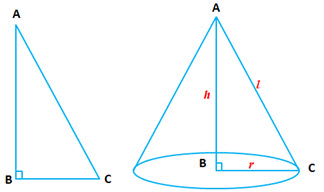
Volume of a Cone
Curved surface area of a cone
Total surface area of a cone = Curved Surface area + Area of the base
Also note that
Sphere
Parameters of a Sphere: Radius of the Sphere ()
Volume of the sphere
Surface area of a sphere
Hemisphere
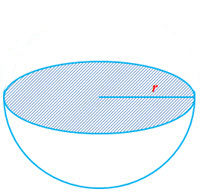 Parameters of a Hemisphere: Radius of the Hemisphere (
Parameters of a Hemisphere: Radius of the Hemisphere ()
Volume of the hemisphere
Total surface area of a hemisphere
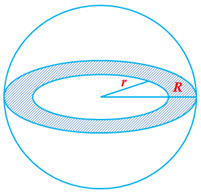 Spherical Shell (hollow)
Spherical Shell (hollow)
Parameters of a shell: Internal Radius of the Shell () and External Radius of the Shell (
)
Volume of the shell (this is also the volume of the material used to make the hollow shell)
External Surface are of spherical shell is the same as that of a sphere of radius R
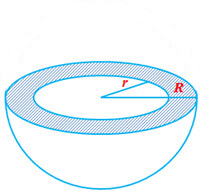 Hemispherical Spherical Shell (hollow)
Hemispherical Spherical Shell (hollow)
Parameters of a hemispherical shell: Internal Radius of the Shell () and External Radius of the Shell (
)
Volume of the shell (this is also the volume of the material used to make the hollow shell)
Total surface are of the shell = outside surface area of the shell + Inside surface area of the shell +area of the ring
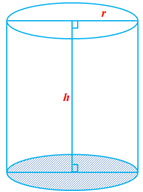
Cylinder
Parameters of a Cylinder: Radius of the base and Height
of the Cylinder.
Area of cross section of a cylinder
Perimeter of the cross section
Volume of the cylinder
Curved surface area
Total surface are of a solid cylinder
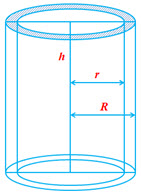 Hollow Cylinder
Hollow Cylinder
Parameters of a hollow cylinder: Internal Radius , External Radius
, Height
Thickness of the wall of the cylinder
Area of the cross section
Volume of the material use to make the hollow cylinder = External volume – Internal volume
External curved surface area
Internal curved surface area
Total surface area = External curved surface area + Internal curved surface area + 2 (Area of cross section)
